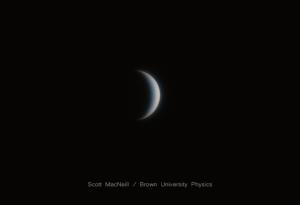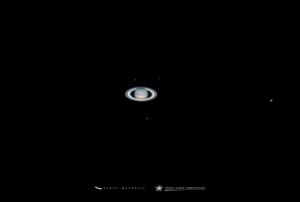Celebration of Space - June 18, 2021
This coming Sunday, June 20, 2021 at 11:32 pm ET, Earth will reach the point in its orbit where the Northern Hemisphere is at maximum tilt (23.4°) towards the Sun. This is the Summer Solstice, and marks the first day of summer in the north. On the Summer Solstice, the Sun will pass directly overhead at noon along the Tropic of Cancer, and will bring the shortest nighttime period of the year in the north. The Arctic Circle will see the Midnight Sun, and the Antarctic Circle will see Polar Night. This may be an awesome time for heat loving zealotry, but the super short nights make it a tough time for astronomy. Allowing for only 4.5 hours of dark sky conditions outside of twilight. Regardless, beach days, BBQ, mosquitoes, awesome sunsets, sunburn, and a bully free playground for the heat loving crazies is here for the next several months, Whether you hate it or love it, step out Sunday and feel the heat of the Summer Solstice and welcome summer. Have a happy Summer Solstice from all the astro-geeks at Frosty Drew Observatory.
This coming Thursday, June 24, 2021 at 2:40 pm ET, the Full Strawberry Moon will occur. This is the June Full Moon. The June Moon is also referred to as the Honey Moon. This is due to the Moon orbiting Earth inclined 5.1° to the ecliptic, which is the path the Sun takes across the sky and represents the plane of the Solar System. In June the Summer Solstice will occur, which places the ecliptic at its highest point in our daytime sky, and consequently, at its lowest point in the nighttime sky. A Full Moon occurs when the Moon arrives on the opposite side of Earth than the Sun, called Opposition. This places the Sun, Earth, and the Moon in alignment. Being that the Moon is inclined 5.1° to the ecliptic, the Moon can be placed anywhere within 5.1° above or below the ecliptic, depending on its orbital progression. This June, the Full Moon will occur about 3.5° below the ecliptic in the night sky. But there is still one more process that gives the Honey Moon its name. That process is called Rayleigh Scattering.
Rayleigh scattering is the scattering of the higher energy visible wavelengths, or blue light. When visible light (red, green, blue) enters Earth’s atmosphere the lower energy red and green wavelengths pass right through the atmosphere, but the blue wavelengths will scatter when encountering the atmosphere and will become polarized, staying in the atmosphere. This is why the sky is blue. It’s also the reason that the Moon and Sun are orange-red when low on the horizon, and why a total lunar eclipse is crimson red. When the Moon and Sun are low on the horizon, our view is through a significantly greater amount of atmosphere compared to the view when they are high in the sky. This increased amount of atmosphere will, via Rayleigh Scattering, filter additional blue light from the view, causing the Moon and Sun to appear redder than usual.
On Thursday night, the Full Moon will only reach a maximum altitude over the horizon at 22°, which places the Moon very low in the southern sky. Low enough that the increased amount of atmosphere will filter out enough blue light that the Moon will glow with a light golden hue, like the color of honey. If wildfire smoke or heavy haze is present, it will exacerbate Rayleigh Scattering making for a deeper golden hue. So step outside on Thursday night and see if the Moon appears a bit more yellow than normal, and welcome the summer season with the first Full Moon of summer.
Have you been noticing Venus over the past several clear evenings? It’s that super bright star-like object that is sitting in the western sky just after sunset. Venus will be taking on its role as the Evening Star this summer, and will present numerous viewing opportunities. So make it a regular thing to set out in the evening to catch a stunning sunset and stick around for a look at Venus. If the Moon is in its waxing crescent stage, Venus will set the stage for a stunning conjunction. Twilight prospects for summer 2021.
Over the past week Saturn has begun rising in the hours before midnight, and starting this week Jupiter will rise in the hours before midnight. This is a yearly indicator we wait for at Frosty Drew Observatory that signals the viewing season of the planets is about to begin. Saturn is, hands down, the most popular view among our visitors at Frosty Drew. Our telescope showcases the rings beautifully, almost to the point where visitors think they are looking at a picture. Depending on local sky conditions, we can often see up to six of Saturn’s moons, the equatorial bands in Saturn’s atmosphere, and at times larger storms that occur on Saturn. Since 2017, Saturn’s 26.7° tilt on its axis has been receding when viewed from the vantage point of Earth. This will make the rings look less and less tilted towards us each year. If you haven’t seen Saturn in our telescope, make plans to visit later this summer and autumn to catch that magical view. We are always excited to hear the gasp of a first time view of Saturn.
- Author:
- Scott MacNeill
- Entry Date:
- Jun 18, 2021
- Published Under:
- Scott MacNeill's Columns





